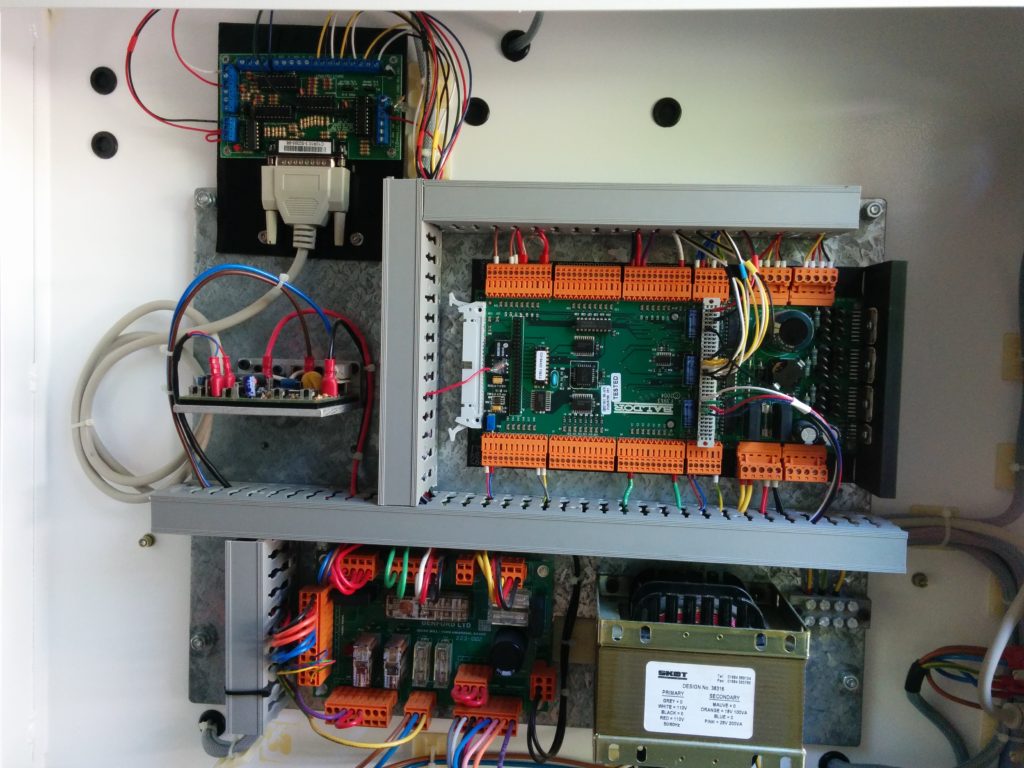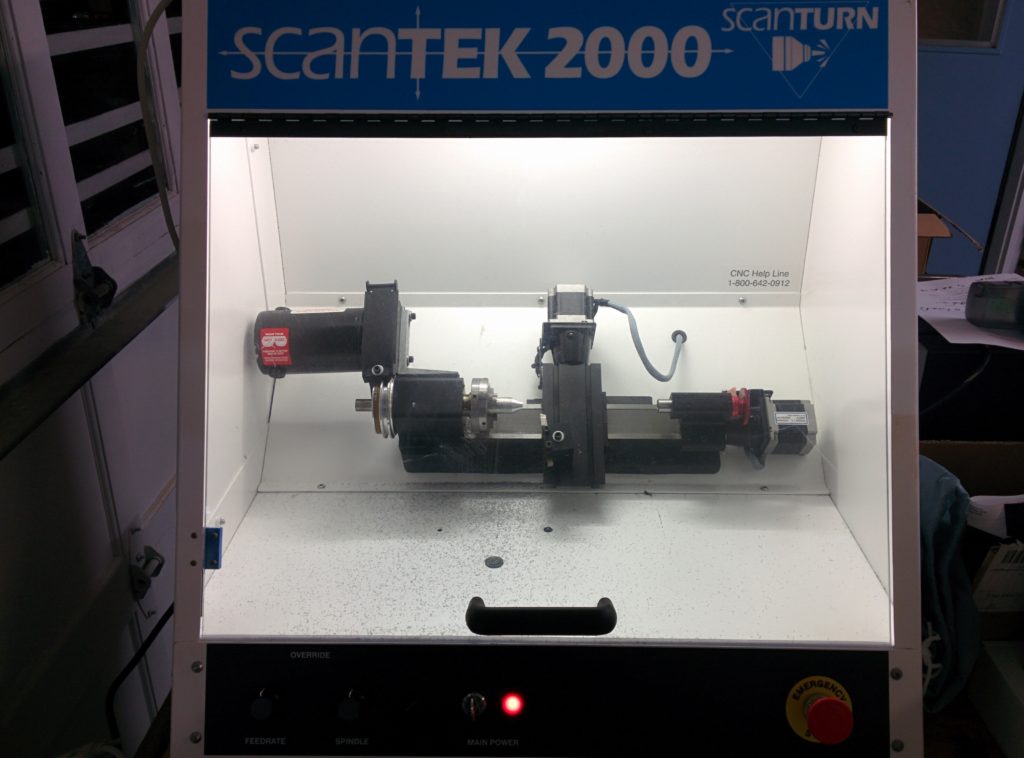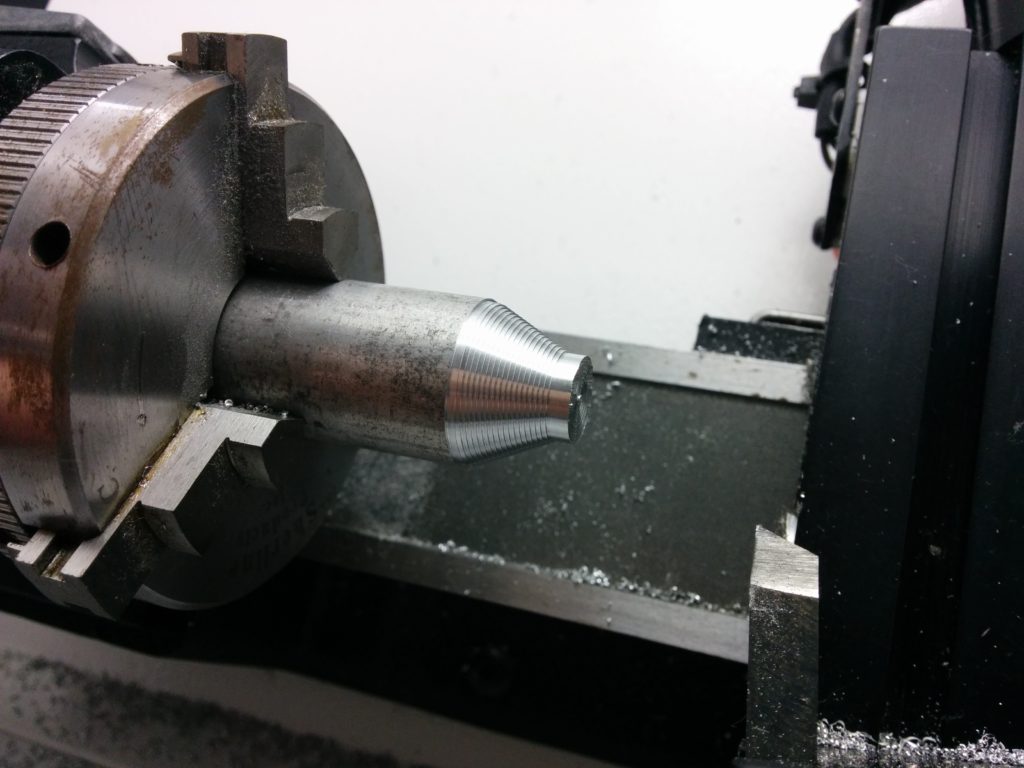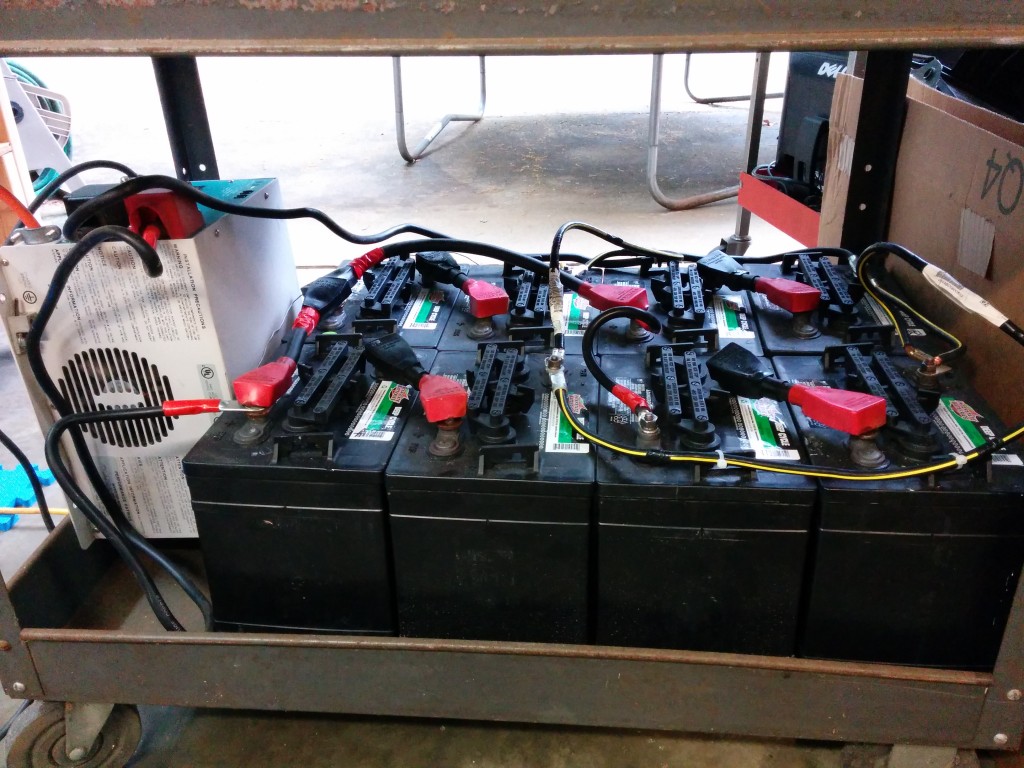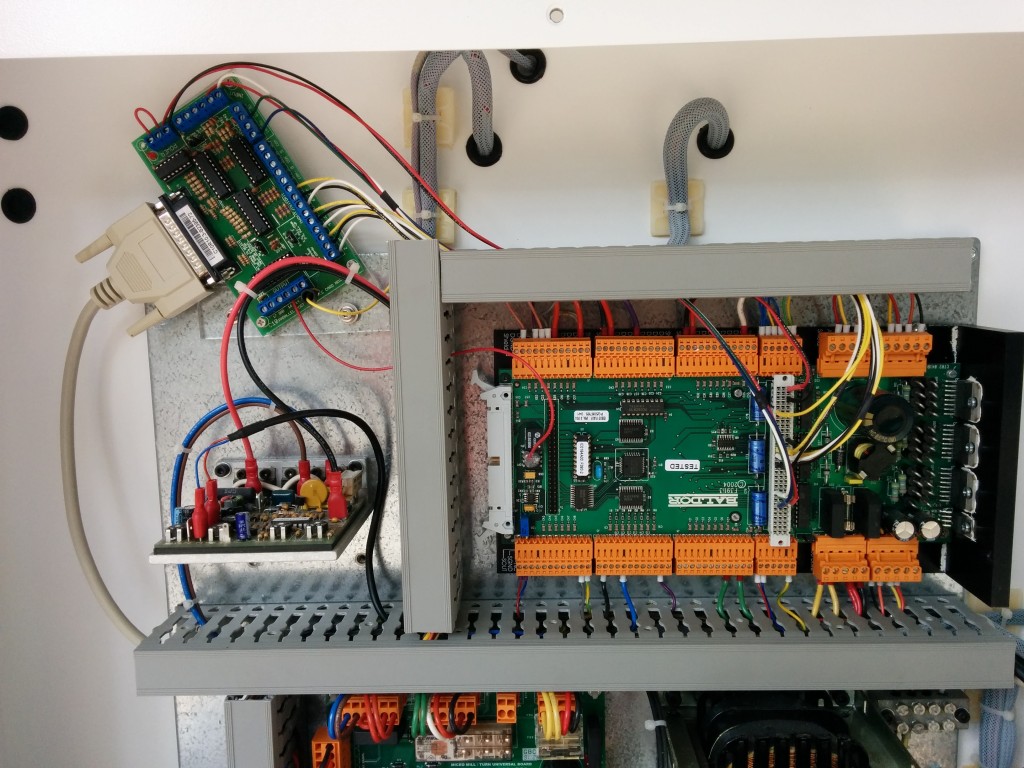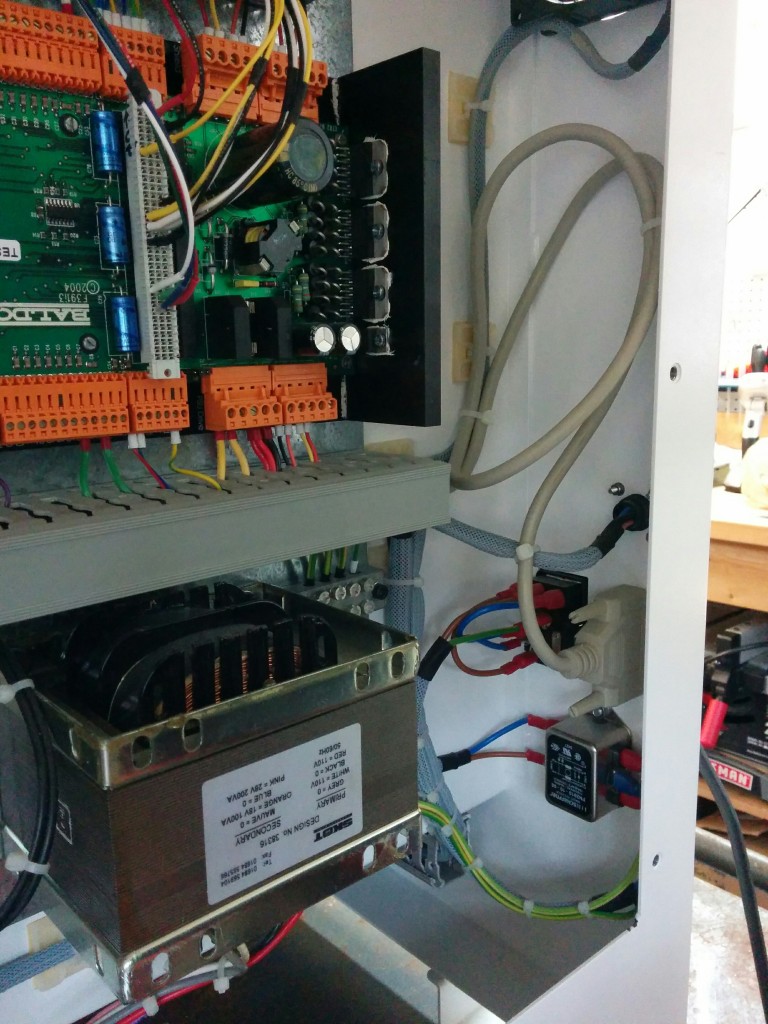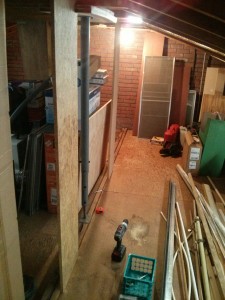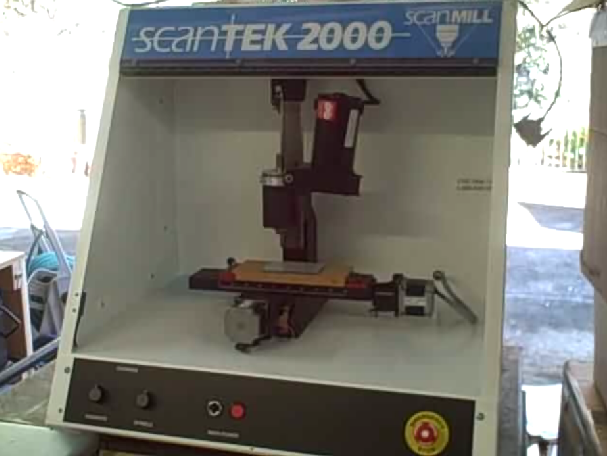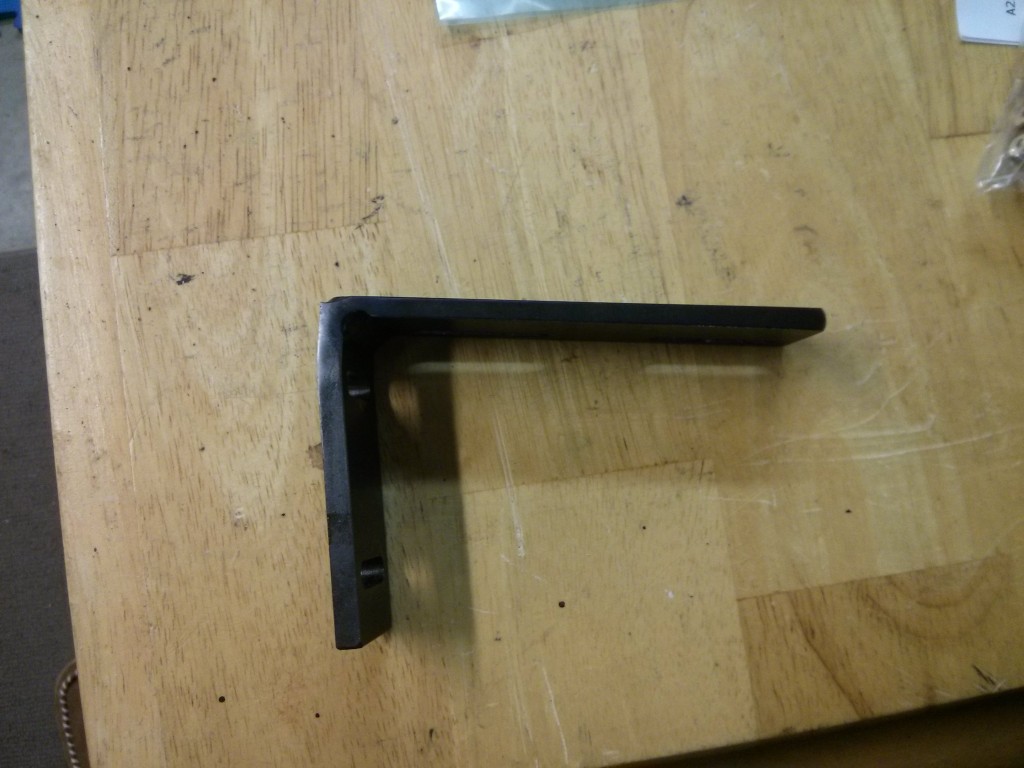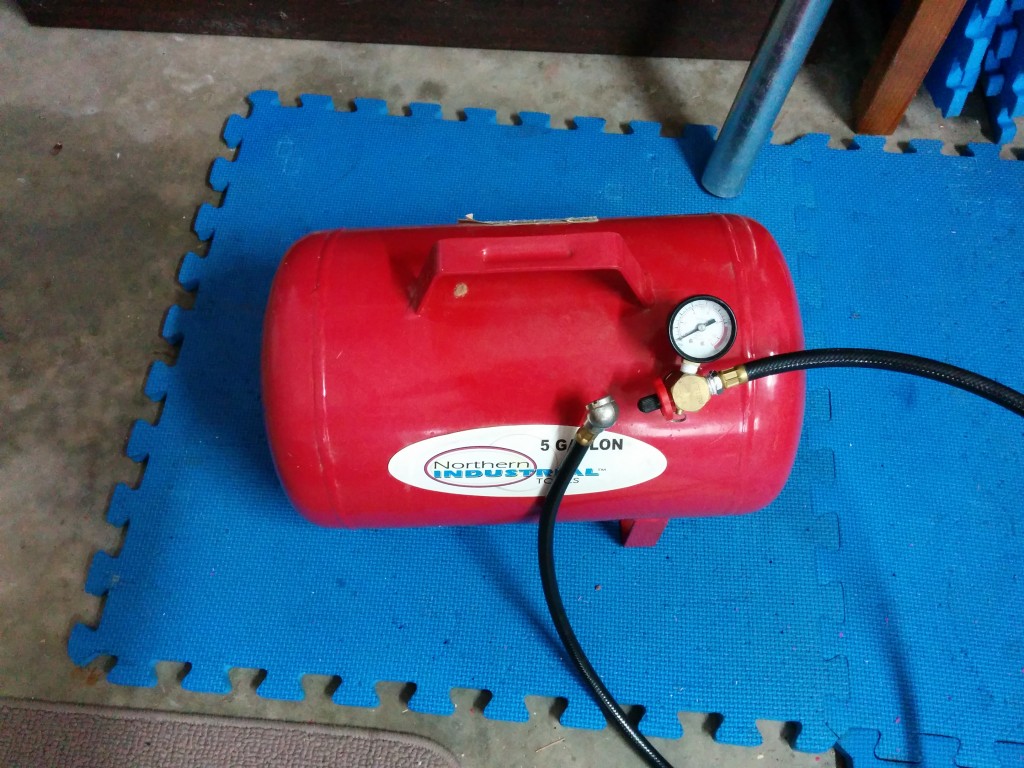
I was given this 5 gallon portable air tank, but you can purchase them from Harbor Freight or Northern Industrial in the $30-35 price range. It is filled with a car tire (Schrader) valve and has a built in pressure gauge, overpressure release valve and car tire fill hose.
I have a small garage compressor. It is a 1.3 HP compressor that provides 2.4 SCFM at 90 psi, which is reasonable if you need to blow stuff off, drive the occasional air wrench, or do some light spray painting, but not a very high output. It only has a 1.5 gallon tank, so if you start using a lot of air it doesn’t last long.
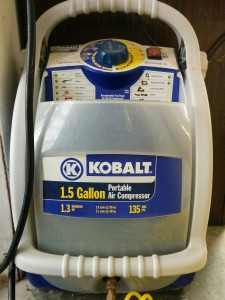
My plasma cutter wants 6 SCFM, which is more than the compressor can provide, but I only need about a 10% duty cycle. (make a cut, then move the metal, re-clamp it, set up a straightedge or jig for the next cut, etc…)
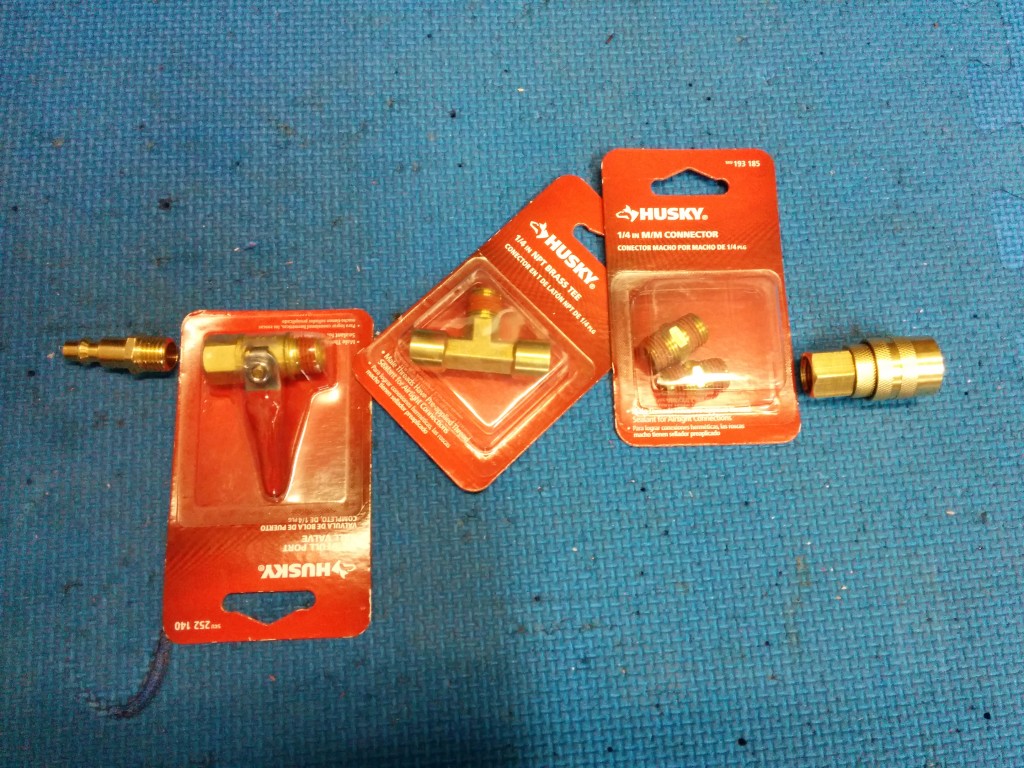
I bought some items in the tools / air-compressor isle at Home Depot to add the ability to attach the 5 gallon tank between my small compressor and the plasma cutter using standard quick connect fittings. The air fill hose that comes with the tank is mounted with a standard 1/4″ NPT connector, so all I need to buy was a T, a ball valve, a quick connection package, and a male to male adapter. I had to screw the pressure gauge 90 degrees to get room for both ends of the T.

One end of the T goes to the ball valve and the quick connect fill connector. This side is connected to the air compressor and allows the tank to be filled by my small compressor and to act as an air buffer. The other end of the T goes to the female quick connect adapter, allowing me to plug in any standard QC hose. I included the ball valve so that I could close it and disconnect the tank from the compressor and have it remain full, although primarily I’ll be using the tank “in-line”. The cost of these parts was $15, or about half the cost of the tank if you bought it new.
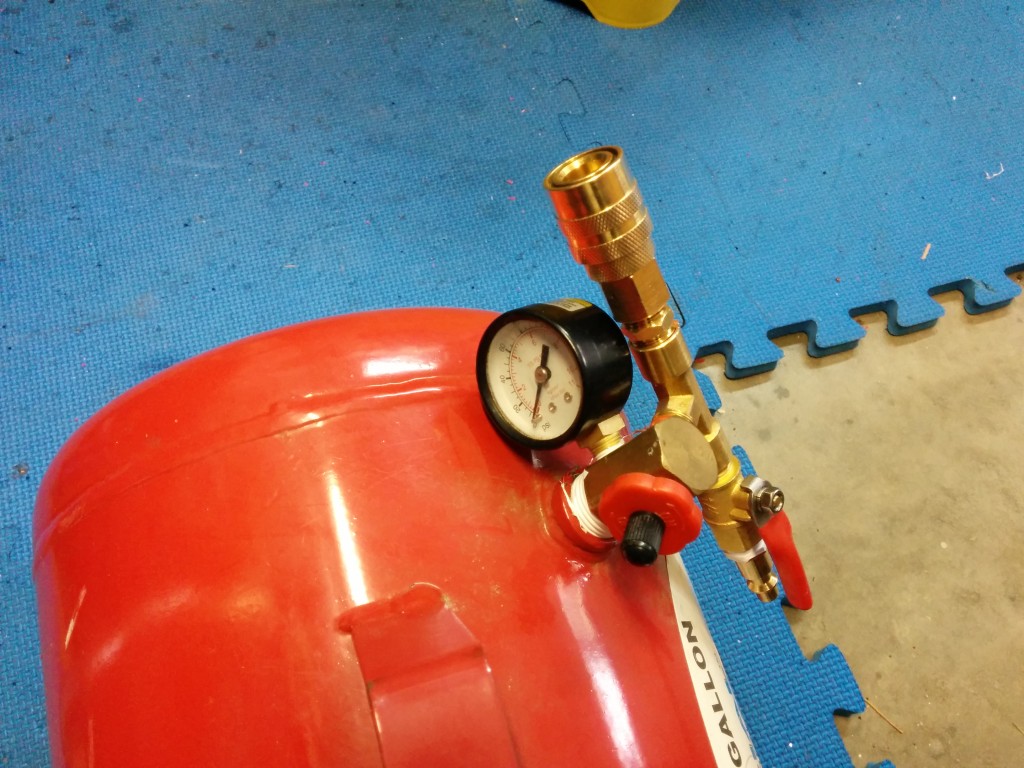
Here is a video:
